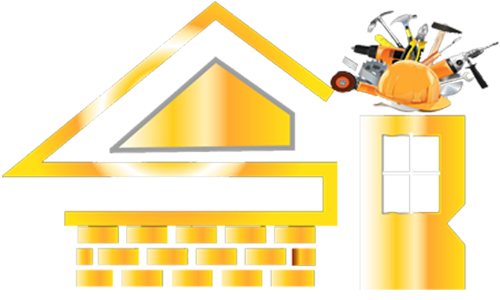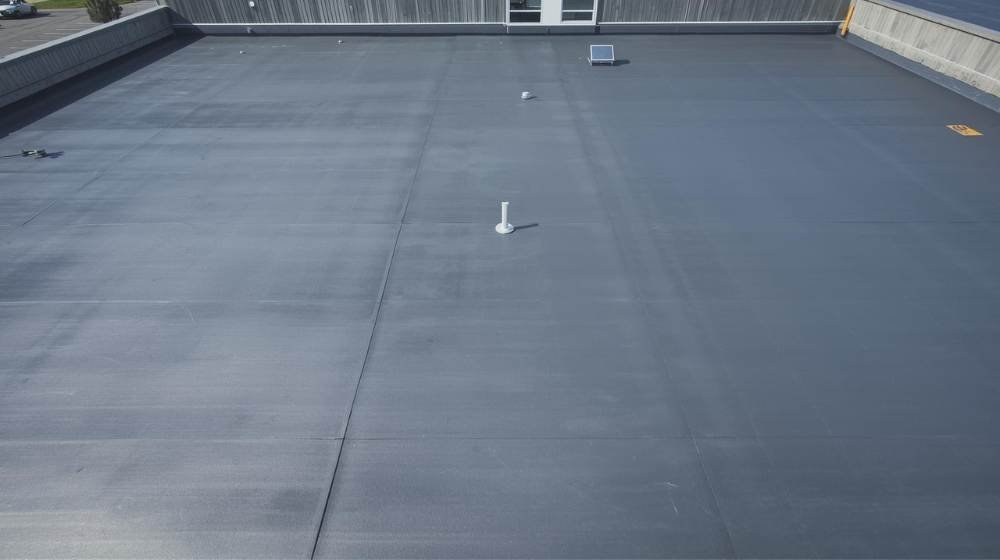
Do you know what EPDM rubber roofing is and why it’s a great choice for your Brooklyn home? If you’re looking for a durable, cost-effective roofing option that withstands the unique weather conditions in NYC, EPDM may be just what you need.
EPDM (Ethylene Propylene Diene Monomer) is a type of synthetic rubber used in roofing that has become a popular choice for homes and businesses alike. Why should you consider EPDM for your Brooklyn home?
Let’s take a closer look at why EPDM rubber roofing is such a great investment. This type of roofing is not only incredibly durable, but it also requires very little maintenance, which makes it perfect for Brooklyn’s weather. Whether it’s the chilly winters or the hot summers, EPDM holds up well against the elements. Plus, it’s a cost-effective option that helps keep your home energy-efficient, which will save you money on your energy bills and protect your roof for years to come.
What are the Advantages and Disadvantages of EPDM Rubber Roofing
Rubber roofing, especially EPDM, is a popular choice for many homeowners. It offers several benefits, but it’s also important to understand the downsides before making a decision. Let’s explore both sides, so you can make an informed choice for your roof. We’ll look at the advantages and also consider some of the challenges that might come with rubber roofing.
Advantages of EPDM Rubber Roofing
- Durability: EPDM is known for its long lifespan, often lasting over 20 years with minimal maintenance. This material is resistant to cracking, shrinking, and UV damage. These features make it ideal for harsh weather conditions. The durability of EPDM ensures you won’t have to worry about frequent repairs or replacements.
- Waterproof Protection: EPDM provides excellent protection against water infiltration. Its rubber composition makes it completely waterproof, which prevents leaks even in heavy rain or snow. This is especially important for homes in areas that experience extreme weather conditions, like Brooklyn.
- Low Maintenance: Once installed, EPDM requires very little care. Unlike traditional roofing materials, it doesn’t need regular coatings or treatments. Simple cleaning and periodic inspections are enough to keep it in good shape for years.
- Energy Efficiency: EPDM reflects UV rays and helps to maintain a cooler temperature inside your home. This can reduce the need for air conditioning in the summer and cut down on energy bills. It’s an affordable way to improve the energy efficiency of your home.
- Flexible Installation Options: Whether you prefer a DIY approach or professional installation, EPDM can be installed in different ways, including fully adhered, mechanically attached, or ballasted. This gives homeowners flexibility in choosing the best method for their roof type and budget.
- Environmentally Friendly: EPDM is made from recyclable materials. These materials make it an eco-friendly roofing option. It’s a sustainable choice for homeowners who want to minimize their environmental impact. Its durability also results in fewer replacements, thereby decreasing the total waste generated by roofing materials
- Cost-Effective: Compared to other roofing materials, EPDM is relatively cheap. The initial installation costs are lower, and its long lifespan means fewer expenses over time. For homeowners on a budget, EPDM is a cost-effective roofing solution that offers great value.
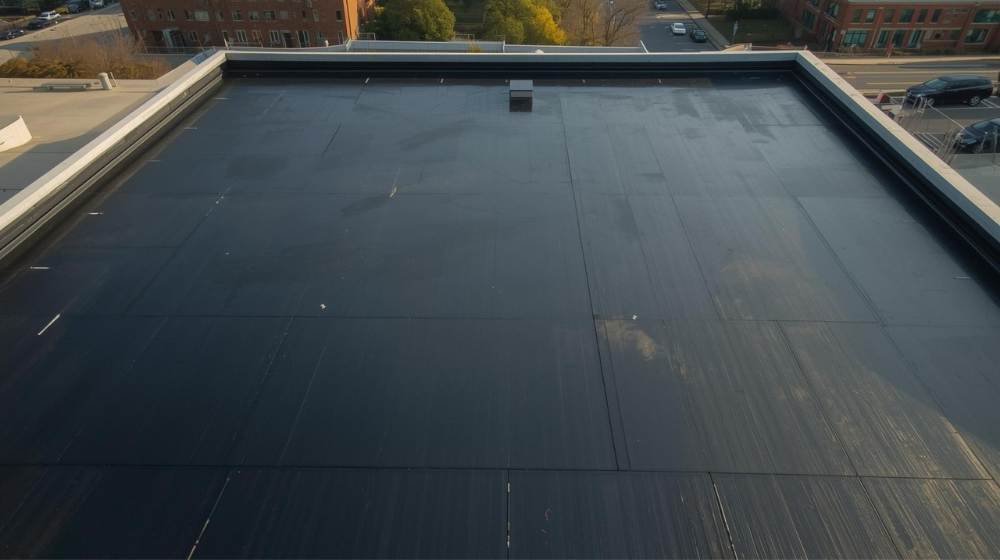
Disadvantages of EPDM Rubber Roofing
- Vulnerability to Punctures: While EPDM is durable, it can still be punctured by sharp objects or heavy debris. This is particularly true in areas with frequent storms or heavy foot traffic. If punctured, the roof may require immediate repair to avoid water damage.
- Limitations of Style: EPDM typically comes in black, which may not appeal to all homeowners. While white versions are available, the color options are still limited compared to other materials. This could be a downside if you’re looking for a roofing style that complements your home’s style.
- Shrinkage Over Time: Although EPDM is highly durable, it may shrink slightly over the years. This is usually due to exposure to UV rays and temperature fluctuations. Shrinkage can cause seams to separate, which can lead to potential leaks if not properly maintained.
- Installation Sensitivity: EPDM roofing requires precise installation, especially for larger roofs. If not installed correctly, issues like air bubbles or improper adhesion can occur. It’s important to hire a skilled professional to ensure the job is done right, which may increase upfront installation costs.
Is EPDM Rubber Roofing Suitable for Brooklyn’s Weather?
EPDM rubber roofing is a great choice for Brooklyn’s weather. It can handle the cold winters and hot, humid summers. The material is flexible, which means it can expand and contract with temperature changes without cracking. Plus, it is waterproof, making it ideal for heavy rainfall or snow that Brooklyn often experiences.
How to Install EPDM Rubber Roofing
EPDM rubber roofing provides a durable and effective solution for protecting your roof from the elements. This guide explains the step-by-step installation process:
- Prepare the Roof Deck: Clean the roof surface to remove dirt, scraps, or old roofing materials. Ensure the surface is dry and smooth, as this will help the adhesive bond better. If needed, repair any damage to the deck before starting.
- Apply Adhesive (for fully adhered installation): Apply a roofing adhesive to the roof deck using a roller or sprayer. Be sure to cover the entire surface evenly to avoid air pockets or inconsistent attachment. Let the adhesive set as per the manufacturer’s instructions.
- Unroll the EPDM Membrane: Roll out the EPDM rubber membrane onto the roof, and ensure it aligns with the edges and corners. Make sure to leave a small gap for expansion along the edges.
- Press Down the Membrane: Press the EPDM membrane down onto the sealant, starting from one edge and moving to the other. Use a roller to make sure the membrane sticks properly without air bubbles or wrinkles.
- Seal the Seams: Apply seam tape or glue to seal the seams of the EPDM sheets. This step is crucial to prevent water from getting under the membrane. Make sure the seams are properly sealed to avoid leaks.
- Trim the Excess Membrane: Once the membrane is in place and the seams are sealed, trim any excess material along the edges of the roof. Ensure that the edges are smooth and neat for a professional finish.
- Final Inspection: Inspect the roof professionally to ensure the installation is correct and the membrane is firmly secured. Check for any areas where the adhesive didn’t bond or where there might be air bubbles.
What is the Cost (per sq. ft.) of installing EPDM Roofing in Brooklyn, NYC
The average cost to install EPDM rubber roofing typically ranges from $4 to $12 per square foot. Below is an updated breakdown based on different types of EPDM systems:
| Types of EPDM Roofing | Material Cost (per sq. ft.) | Labour Cost (per sq. ft.) | Total Cost (per sq. ft.) |
| Fully Adhered EPDM Roofing | $2.50 – $5.00 | $2.00 – $4.00 | $4.50 – $9.00 |
| Ballasted EPDM Roofing | $1.50 – $3.00 | $2.00 – $3.50 | $3.50 – $6.50 |
| Mechanically Fastened EPDM | $2.00 – $4.00 | $2.00 – $4.00 | $4.00 – $8.00 |
| Reinforced EPDM | $3.00 – $5.00 | $2.50 – $4.50 | $5.50 – $9.50 |
| Self-Adhering EPDM | $3.00 – $5.00 | $2.50 – $4.00 | $5.50 – $9.00 |
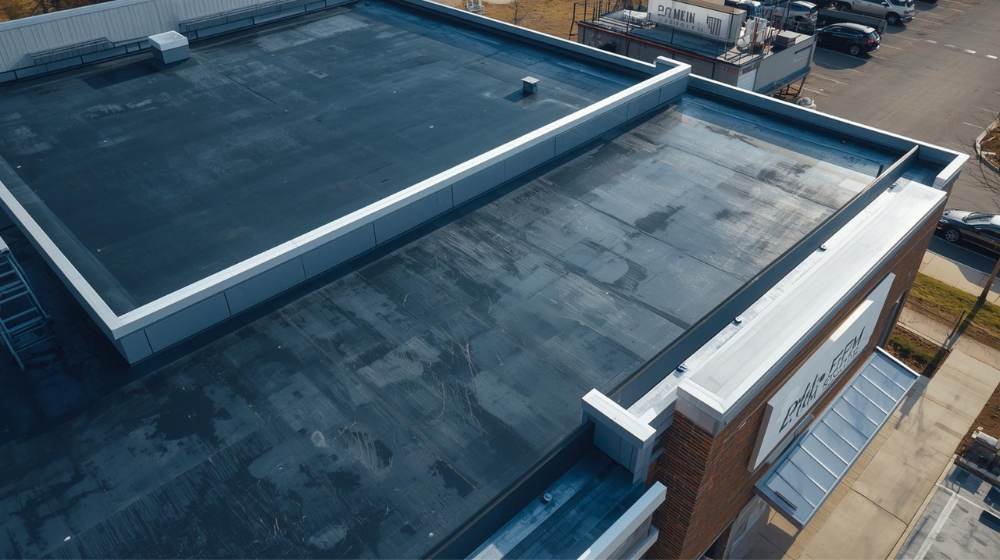
How to Repair an EPDM Rubber Roof
EPDM rubber roofs are built to last, but they can still be prone to damage over time. A quick repair can restore your roof’s strength and prolong its life. Quick action helps you avoid expensive repairs.
- Identify the Damage: Start by inspecting the damaged area. Look for any punctures, tears, or spots where the membrane has lifted. It’s crucial to clean the area before starting any repairs.
- Clean the Area: Use a mild detergent and water to clean the damaged section gently. Be sure to remove any dirt, trash, or moisture to ensure the repair materials will stick properly.
- Apply EPDM Repair Tape or Patch: Cut a piece of EPDM repair tape or a patch that’s just a bit larger than the damaged area. Apply sealant to the affected spot, then press the patch down firmly. Use a roller to smooth it out and eliminate any air bubbles.
- Seal the Edges: Seal the edges of the patch with EPDM seam tape to keep water from getting underneath. Press the edges firmly to make sure the seal is tight.
- Let the Repair Set: Allow the repair to set according to the manufacturer’s instructions before walking on it or exposing it to the weather. Make sure the repair is fully adhered before considering the job complete.
💡Experts Guide
Installation Expert Guide
When installing EPDM, always ensure the roof surface is properly cleaned and dry before applying the glue. The key to a successful installation is evenly applying the sealant to avoid air pockets or wrinkles. Also, be sure to carefully inspect the seams and edges, as these are the most vulnerable areas for leaks.
Repairing Expert Guide
For a seamless repair, make sure to clean the damaged area properly and apply the patch within a few hours of cleaning. Use a roller to ensure the patch is securely pressed down, eliminating any air bubbles. For best results, make sure to properly seal the edges of the patch with seam tape to avoid water infiltration.
Types of EPDM Roofing and Cost
EPDM rubber roofing comes in several types, each offering unique benefits depending on your needs. Let’s elucidate the types and their typical costs:
- Fully Adhered EPDM Roofing: This type uses adhesive to bond the membrane directly to the roof deck. It provides a seamless, waterproof surface.
- Cost: $4.50-$9.00 per square foot.
- Ballasted EPDM Roofing: This system uses gravel or ballast to keep the membrane in place. It is ideal for commercial flat roofs and is often the most affordable option.
- Cost: $3.00-$6.50 per square foot.
- Mechanically Fastened EPDM Roofing: With this type, the membrane is attached using fasteners and plates. It offers flexibility and is widely used for larger commercial buildings.
- Cost: $4.00-$8.00 per square foot.
- Reinforced EPDM: Reinforced EPDM includes a polyester or fiberglass layer which makes it more durable. It’s ideal for areas with high traffic or harsh weather conditions.
- Cost: $5.50-$9.50 per square foot.
- Self-Adhering EPDM: This type has a self-adhesive backing, which makes installation easier. It’s a good choice for DIY projects or small residential roofs.
- Cost: $5.50-$9.00 per square foot.
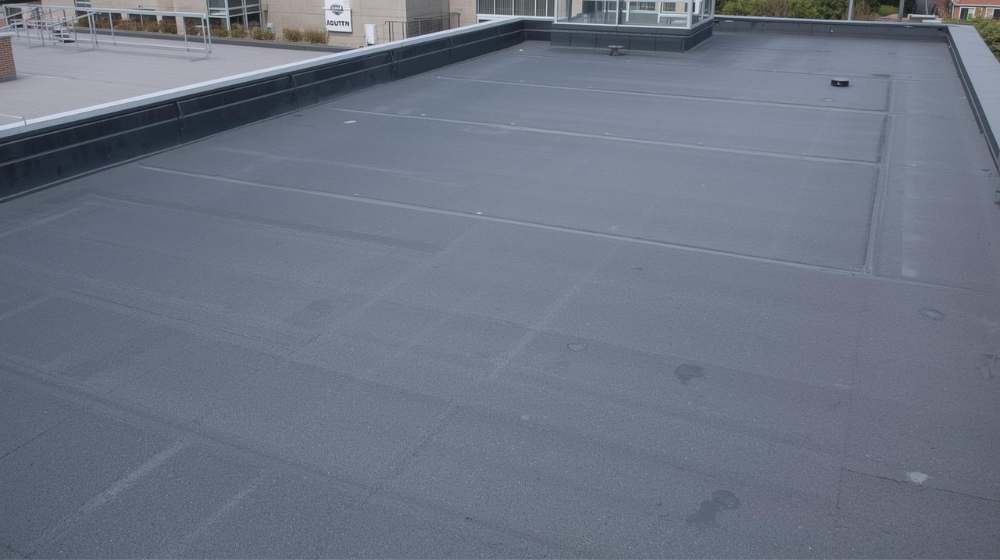
What are the Common EPDM Rubber Roofing Kits
EPDM roofing kits are designed for easy installation and repair. Here are some of the most common kits:
- DIY EPDM Roofing Kit: Complete with all materials for small, residential roofs.
- EPDM Roof Repair Kit: Includes patches, sealants, and seam tape for repairing damaged roofs.
- Commercial EPDM Roofing Kit: Designed for larger roofs, includes large rolls of EPDM, adhesives, and fasteners.
- EPDM Installation Kit: Contains all the necessary tools and materials for professional-grade installation, including rollers and seam sealant.
Composition and Structure of EPDM Rubber Roof
EPDM (Ethylene Propylene Diene Monomer) roofing is a synthetic rubber compound known for its durability and flexibility. Its composition and structure provide excellent resistance to environmental elements, which makes it a popular choice for roofing systems. Below is an explanation of its components:
components
- Ethylene and Propylene:
- These are the primary monomers in EPDM, derived from petroleum or natural gas. They provide flexibility and resistance to heat, ozone, and ultraviolet (UV) radiation.
- Diene Monomer:
- The diene monomer is included to introduce unsaturation into the polymer chain. This gives the rubber elastic properties that allow it to stretch and return to its original shape without cracking.
- Reinforcement Fillers:
- EPDM rubber contains fillers like carbon black, silica, and other agents that enhance physical properties. These additives improve strength, weatherability, and UV resistance.
- Additives and Stabilizers:
- Stabilizers and plasticizers are included to protect the material from degradation caused by exposure to sunlight, chemicals, and other environmental factors.
Structure of EPDM Roofing Membrane
- Single-Ply Membrane:
- EPDM roofing is installed as a single-ply membrane, which is a single layer of EPDM material that provides waterproofing and insulation.
- Thickness and Flexibility:
- The membrane is available in thicknesses ranging from 45 mil to 90 mil (thousandths of an inch). Its flexibility allows it to expand and contract with temperature changes. It reduces the risk of damage from movement.
- Seam Integrity:
- EPDM roofing systems use heat-welded or chemically bonded seams to ensure secure edges. It prevents leaks and water infiltration.
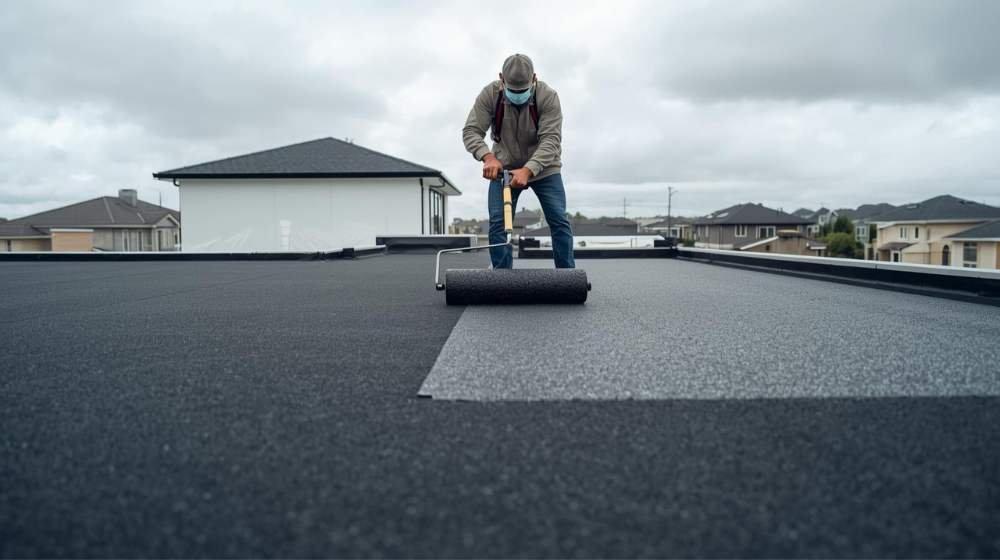
White EPDM Roofing vs Black EPDM Roofing
When choosing between white and black EPDM roofing, it’s important to understand how each type performs under different conditions. The following table compares both options based on various factors to help you make an informed decision.
| Factor | White EPDM Roofing | Black EPDM Roofing |
| Reflectivity | Reflects sunlight, keeping the roof cooler | Absorbs heat, leading to higher temperatures |
| Energy Efficiency | Better for reducing cooling costs | May increase cooling costs in hot climates |
| Appearance | Lighter, more aesthetically appealing | Darker, traditional look |
| Durability | Similar durability to black EPDM | Similar durability to white EPDM |
| UV Resistance | Reflects UV rays, increasing lifespan | Absorbs UV rays, which can cause degradation over time |
| Cost | Generally more expensive than black EPDM | Typically cheaper than white EPDM |
Comparison Between EPDM and Other Rubber Roofing Options
EPDM roofing is one of several rubber roofing options available. The table below compares EPDM with other common rubber roofing materials based on key factors like lifespan, cost, and weather resistance.
| Roof Type | Lifespan | Cost (per sq. ft.) | Weather Resistance (Brooklyn) |
| EPDM | 20-30 years | $4.00-$12.00 | Excellent resistance to sun, wind, and rain |
| TPO | 15-25 years | $6.00–$9.00 | Good resistance, but prone to degradation with UV exposure |
| PVC | 20-30 years | $7.50–$11.00 | Strong UV and chemical resistance, good for coastal areas |
| Neoprene | 15-30 years | $8.00–$12.00 | Moderate resistance, best for chemical exposure |
| CSPE (Hypalon) | 20-30 years | $9.00–$13.00 | Very strong weather resistance but expensive |
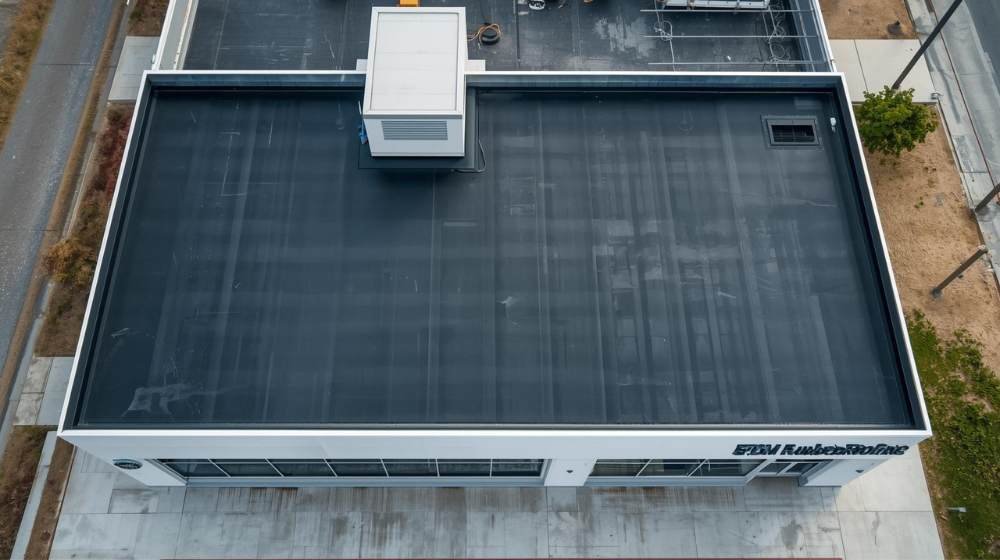
What is EPDM Roof Coating?
EPDM roof coating is a protective layer applied on top of the EPDM roofing membrane. It enhances durability, adds UV protection, and can improve water resistance without replacing the existing roof.
Where to Choose a Professional Roofing Contractor: EPDM Rubber Roofing Service near You
Are you looking for an expert roofing contractor in Brooklyn, NYC? SR General Construction has you covered! Our business is located at 8807 Avenue B, Brooklyn, NY 11236, United States, in the Canarsie area.
We proudly serve all areas of Brooklyn with high-quality, durable roofing solutions. From new installations to repairs and maintenance, we provide the best service at affordable prices. Contact us and experience why we’re Brooklyn’s roofing experts!
FAQ
1. What is EPDM roofing?
EPDM stands for Ethylene Propylene Diene Monomer. It’s a synthetic rubber roofing membrane widely used for flat or low-slope roofs due to its durability and flexibility.
2. How long does an EPDM roof last?
An EPDM roof can last up to 20-30 years with proper installation and maintenance. Its resistance to UV rays, ozone, and extreme temperatures contributes to its longevity.
3. Can EPDM roofing be installed over existing roofs?
Yes, EPDM roofing can be installed over existing roofs, provided the surface is clean, dry, and structurally sound. In some cases, a fleece-backed EPDM membrane may be used for better adhesion.
4. What is the cost of EPDM roofing?
The cost of EPDM roofing varies based on factors like roof size, installation method, and location. On average, it ranges from $4 to $10 per square foot.
5. Does EPDM roofing come in different colors?
While traditional EPDM roofing is black, white, and other colors are available. Lighter colors can help reflect heat, making them suitable for warmer climates.
6. How does EPDM compare to TPO roofing?
EPDM is more flexible and better suited for colder climates, while TPO offers better UV resistance and energy efficiency.
7. What thickness of EPDM should I use?
The recommended thickness for residential applications is 45 mils (1.14 mm). Thicker membranes may be used for commercial applications or areas with higher foot traffic.
8. What are the installation methods for EPDM roofing?
EPDM roofing can be installed using three methods: fully adhered, mechanically fastened, and ballasted. The choice depends on factors like roof size, wind exposure, and budget.
